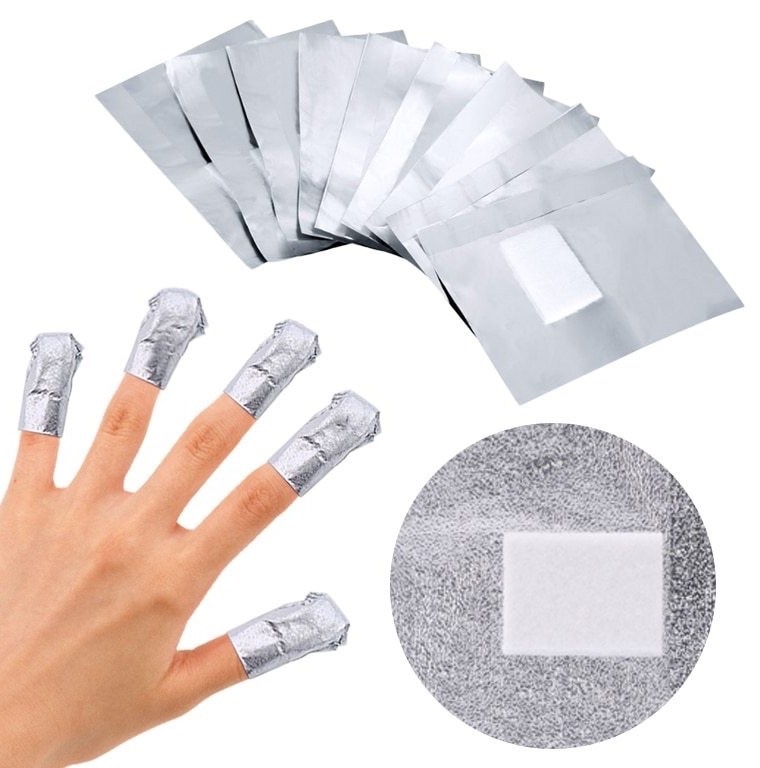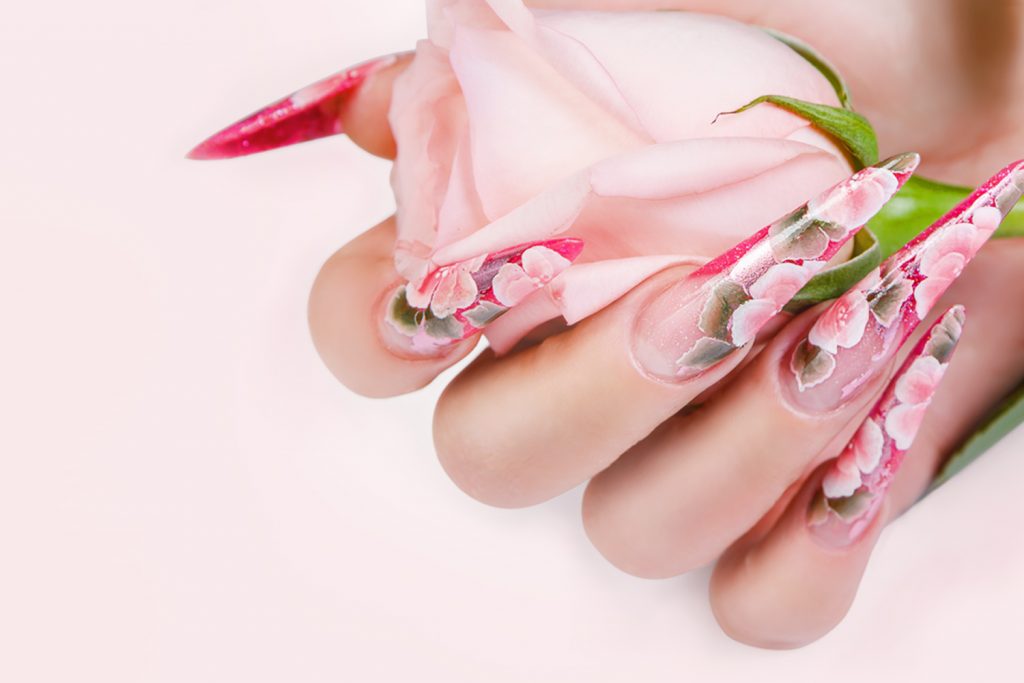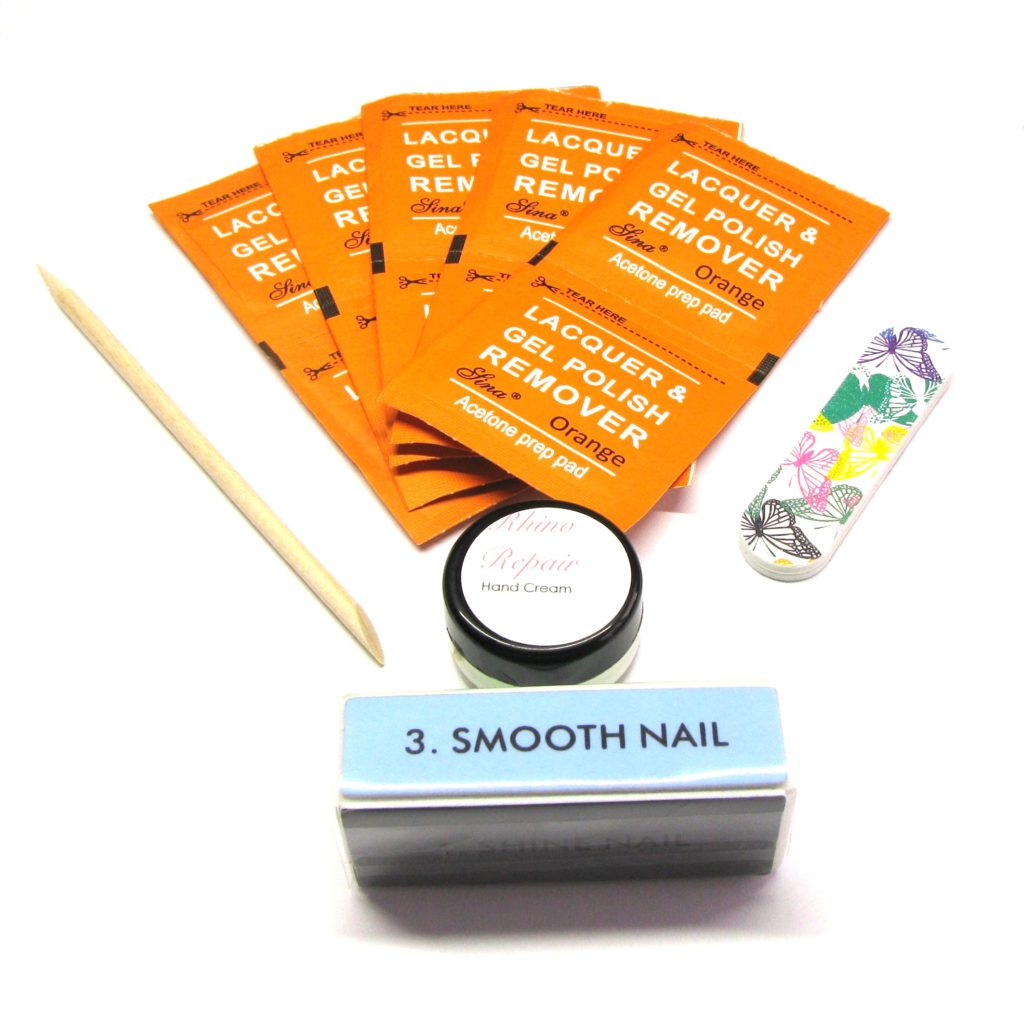Can gel polish or gel extensions be removed at home?
Yes, they can, but I always recommend having gel polish or gel extensions removed by a professional. If, for some reason, you are unable to make an appointment to see me, or can’t get to a professional salon, then you can do it yourself using the steps below:
You will need:
- a nail file
- a buffing block (optional)
- nail polish remover containing acetone (non-acetone formulas won’t work)
- cotton wool, or cotton wool pads (cut the rounds into quarters)
- foil wraps (squares of tinfoil approximately 5cm x 10cm)
- a cuticle pusher, or orangewood cuticle stick
- cuticle oil (or olive oil, hand cream will also work but not as well)
I do sell gel polish removal packs that contain a nail file and buffing block, cuticle stick, ten removal wraps containing acetone, and a small pot of hand lotion. If you’d like one of these packs, kindly ask at your next manicure appointment or purchase one from our online store. If you’ve already purchased a removal pack and still have the nail file, buffing block and wooden cuticle stick, I can sell you the removal wraps without you needing to purchase an entire removal kit.
To remove your gel polish or gel extensions:
1. Lightly file the entire surface of the gel polish with the nail file, so that the top coat loses its shine.
2. Apply cuticle oil to the skin around your nails, avoid getting it on your nails. The cuticle oil will prevent the nail polish remover from drying out your skin too much. If you don’t have cuticle oil, apply a little olive oil or a thin layer of hand cream.
3. Moisten your cotton wool well with nail polish remover and place the cotton wool over the nail and wrap a square of foil securely around your finger, folding the excess on top over onto the top of your nail. Squeeze the wrap in place so that it’s a snug fit. If using a removal kit, open the pre-moistened removal pad sachet according to the instructions on the pouch, and slip your finger into the pouch with the pad on sitting on top of your nail. Use the self adhesive strip to secure the pouch around your finger (see photos at the bottom of this post).

4. Repeat step 3 and wrap all remaining nails.
5. Leave these foil caps on for 10 minutes to dissolve the gel polish bonds. If you’re soaking off gel extensions, wait 15 minutes.
6. If it’s cold, sit on your hands or place them under one of those microwavable heat packs or a wheaty bag, as warmth helps to loosen the polish and adhesive bonds.
7. Starting with the finger that you first applied nail polish remover to, carefully slide the foil cap or pouch off, being careful not to squash it. Gently scrape off any soft and peeling gel polish using the cuticle stick. If the polish doesn’t come off easily, replace the foil cap that you’ve just removed and move onto the next finger. Don’t force any stubborn polish off, as you may damage your nail.
8. Repeat with remaining fingers, removing and replacing the foil caps as needed, until all the polish has been soaked off and gently removed. You may need to do step 7 multiple times if removing gel extensions.
9. (optional) Use the buffing block to remove any last traces of product, starting with side 2, then side 3. Finally, use side 4, to buff your nails to a nice shine. Finish by applying hand cream and massage it into the hands, cuticles and nails.
This method can also be used for gel polish on toes, but it can be rather fiddly.
If you absolutely cannot get to a salon for a professional to remove your acrylic enhancements, this same method can be used, although acrylic will need to be soaked for longer – around 20 minutes. If the acrylic doesn’t gently flake off, replace the foil ‘cap’ and soak it for a little longer. Don’t force any acrylic off, as you will damage your natural nails by tearing off layers of the nail along with the product you’re trying to remove. This kind of damage can leave your nails paper-thin and soft, or if it’s really stuck, even tear off whole portions of the nail plate, doing permanent damage to your natural nail.
Wherever possible, always get a professional to remove your gel polish, and acrylic or hard gel enhancements.
Please note that PolyGel and Hard Gel overlays and extensions are done with non-soak off products and cannot be removed using the method above for gel polish. Polygel and Hard Gel overlays or enhancements should always be removed by a professional.













Leave a Reply
You must be logged in to post a comment.